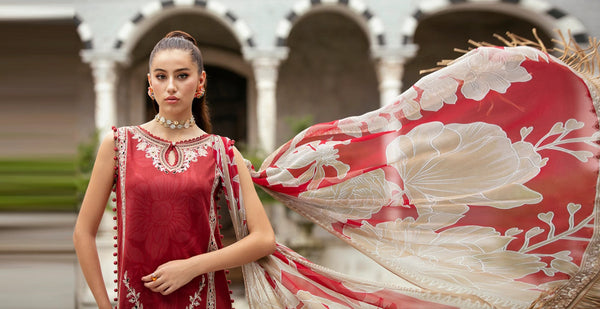From Red to White: The Significance of Every Color in Indian Clothing
Indian fashion is a vivid celebration of colors, culture, and tradition. Every shade worn in Indian clothing carries deep meaning — from the passionate red of a bridal saree to the serene white worn during rituals. Unlike Western fashion, where color often follows seasonal trends, Indian clothing uses colors to express emotions, mark life events, and reflect spiritual beliefs. Understanding the significance of these colors helps us appreciate how fashion and culture intertwine beautifully in India.

Vibrant hues that define Indian traditional clothing.
The Cultural Meaning of Colors in Indian Clothing
In India, colors are more than just aesthetic choices — they are emotional and spiritual symbols. Each hue carries its own story, often influenced by religion, region, and ritual. For example, red signifies purity and marital bliss, while yellow represents knowledge and auspiciousness. The color choices in sarees, lehengas, and kurtas often depend on the event, season, and even astrological beliefs.
Below is a quick look at the symbolic meaning of popular colors in Indian wear:
| Color | Symbolism | Commonly Worn For |
|---|---|---|
| Red | Love, passion, purity | Weddings, festivals |
| Yellow | Knowledge, prosperity | Haldi ceremonies, pujas |
| Green | Fertility, freshness, new beginnings | Festivals, post-wedding events |
| Blue | Calmness, stability, divinity | Religious functions, casual wear |
| White | Peace, spirituality | Religious events, mourning rituals |
| Pink | Grace, romance | Festivals, casual celebrations |
| Orange | Spirituality, enthusiasm | Religious ceremonies |
Red – The Color of Love and New Beginnings
In Indian culture, red is the color of celebration. It signifies passion, fertility, and purity. That’s why red dominates Indian bridal wear — from sarees in South India to lehengas in the North. Traditionally, brides wear red to symbolize the start of a new chapter filled with love and prosperity.
Styling tip: For weddings or festive events, pair red outfits with gold jewelry to enhance the regal appeal. You can also tone it down for semi-formal events by choosing deeper shades like maroon or wine red with minimal accessories.

Red symbolizes purity and new beginnings in Indian weddings.
Yellow – The Shade of Sunshine and Positivity
Yellow represents knowledge, happiness, and energy. It’s considered an auspicious color and is often worn during the Haldi ceremony — a pre-wedding ritual where turmeric paste is applied to the bride and groom. The connection between turmeric (haldi) and yellow clothing reflects purity and protection from negativity.
Styling tip: Light yellow cotton kurtas or sarees look graceful for daytime events. For festive wear, choose silk or chiffon fabrics with gold embroidery to radiate warmth and elegance.

Yellow brings cheer and auspiciousness to pre-wedding celebrations.
Green – The Color of Growth and Harmony
Green stands for fertility, harmony, and freshness. It is often associated with nature and new beginnings, making it popular among newlyweds and expectant mothers. During festivals like Eid or Diwali, many women wear green sarees or salwar suits as a symbol of renewal and prosperity.
Styling tip: Emerald green or olive shades pair beautifully with gold or beige accents. You can add a traditional touch with kundan jewelry and a matching dupatta.

Green represents freshness and new beginnings in Indian attire.
Blue – The Divine and Calm Hue
Blue symbolizes calmness, depth, and divinity. It is the color associated with deities like Lord Krishna and Lord Vishnu. Blue clothing is a perfect choice for religious events and casual wear. It brings serenity to the wearer and reflects emotional stability.
Styling tip: Choose deep royal blue for evening events or lighter sky-blue tones for casual gatherings. Pair with silver jewelry for a contemporary twist.

Blue symbolizes serenity and devotion in Indian tradition.
White – The Symbol of Peace and Spiritual Purity
White holds a sacred place in Indian tradition. It represents peace, simplicity, and spiritual enlightenment. While it is often worn during mourning rituals, it also holds elegance in religious and spiritual contexts. In South India, white and off-white sarees with golden borders are considered highly traditional and elegant for ceremonies.
Styling tip: For modern events, you can style a white saree with pastel blouses or metallic jewelry to achieve a graceful, minimal look. White linen or cotton suits are also perfect for summer comfort.
Other Popular Colors and Their Meanings
- Pink: Represents femininity, grace, and romance. Popular for engagement and festive outfits.
- Orange: Symbolizes spirituality and enthusiasm. Often worn by monks and used in temple ceremonies.
- Purple: Associated with luxury, wisdom, and nobility. Ideal for evening functions and receptions.
- Gold: Reflects opulence, success, and divine energy. Commonly used in wedding embroidery and jewelry.
Together, these colors create a rich palette that mirrors India’s diversity and cultural depth. Every garment tells a story — a connection between emotion, occasion, and identity.
How to Choose Colors for the Right Occasion
Choosing the right color for your outfit depends on the event, mood, and season. Here’s a quick guide to help you decide:
| Occasion | Recommended Colors |
|---|---|
| Weddings | Red, Gold, Maroon, Pink |
| Festivals | Yellow, Green, Orange, Royal Blue |
| Religious Events | White, Orange, Blue |
| Casual Gatherings | Pastels, Beige, Light Green |
| Formal Parties | Navy Blue, Burgundy, Silver |
Conclusion: The Eternal Language of Colors
Colors are the heart of Indian fashion. They tell stories of love, devotion, celebration, and spirituality. From the fiery red of a bride’s attire to the calm white of a spiritual ceremony, every shade holds cultural value. Wearing the right color is not just about style — it’s about embracing emotion, heritage, and identity. So, the next time you pick an Indian outfit, remember: each color carries a story waiting to be told.






